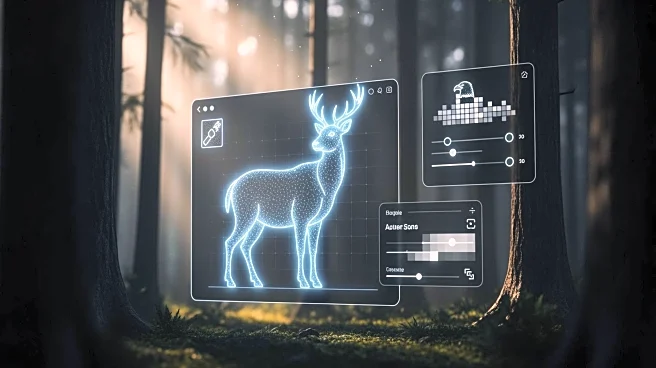What's Happening?
Meta has introduced the third generation of its Segment Anything Models (SAM), focusing on visual intelligence to improve content editing and wildlife conservation efforts. These models excel in object
detection, allowing for precise editing in Meta's platforms, such as Instagram and Facebook Marketplace. SAM 3 models are also being utilized in wildlife conservation research, partnering with ConservationX and Osa Conservation to analyze video footage from over 10,000 cameras, aiding in the identification of over 100 species. This development highlights Meta's commitment to leveraging AI for practical applications beyond traditional tech environments.
Why It's Important?
Meta's SAM 3 models represent a significant advancement in AI's application to real-world problems, particularly in wildlife conservation. By enhancing object detection capabilities, these models can improve the accuracy and efficiency of species identification, aiding conservation efforts and biodiversity studies. Additionally, the integration of SAM 3 into content editing tools across Meta's platforms demonstrates the potential for AI to streamline digital media processes, offering users more precise and efficient editing options. This dual application underscores the versatility of AI technologies in addressing diverse challenges, from environmental conservation to digital content management.
What's Next?
Meta is expected to continue refining its SAM models, potentially expanding their applications to other areas of conservation and digital media. The company may seek further collaborations with conservation organizations to enhance data collection and analysis capabilities. As SAM 3 models become more integrated into Meta's platforms, users can anticipate improvements in content editing features, offering more sophisticated tools for personal and professional use. The ongoing development of SAM models may also influence AI research, encouraging other tech companies to explore similar applications in conservation and media.
Beyond the Headlines
The use of AI in wildlife conservation raises ethical considerations, particularly regarding the impact of surveillance technologies on privacy and ecosystems. As AI models become more prevalent in conservation efforts, stakeholders must ensure that their use aligns with ethical standards and does not disrupt natural habitats. Additionally, the integration of AI into digital media may influence cultural perceptions of technology, as users navigate the balance between innovation and privacy. Long-term, the success of SAM models could inspire broader adoption of AI in environmental and media sectors, shaping future technological landscapes.












